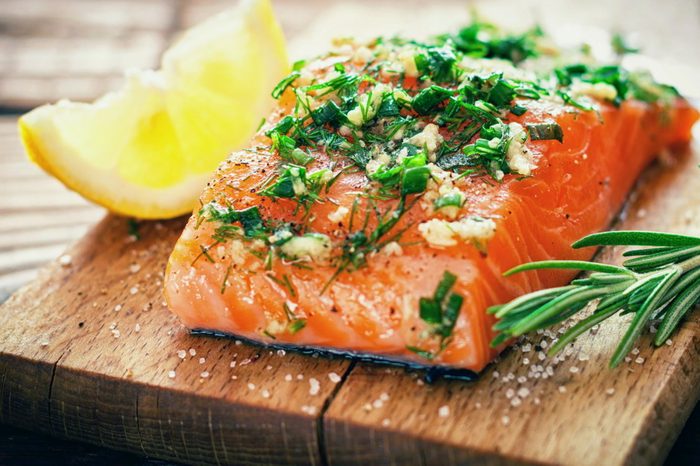
Ask yourself two questions before giving in to cravings
One simple, but effective, diet change that could help you lose weight is asking two questions. First, ask if you’re hungry, and then ask what you’re in the mood to eat. Susan Bowerman, RD, director of Worldwide Nutritional Education and Training at Herbalife, says that people often eat for reasons besides physical hunger. Understanding why you want to eat a certain food could help you determine if eating is the best solution. “You could be procrastinating, or bored, or stressed. Or maybe you just really need a hug. Distract yourself for five to ten minutes, a buffer time to decide if you’re really hungry,” adds Jennipher Walters, a certified personal trainer, co-founder of Fit Bottomed Girls LLC, and author of The Fit Bottomed Girls Anti-Diet. Here are easy ways to lose weight naturally.
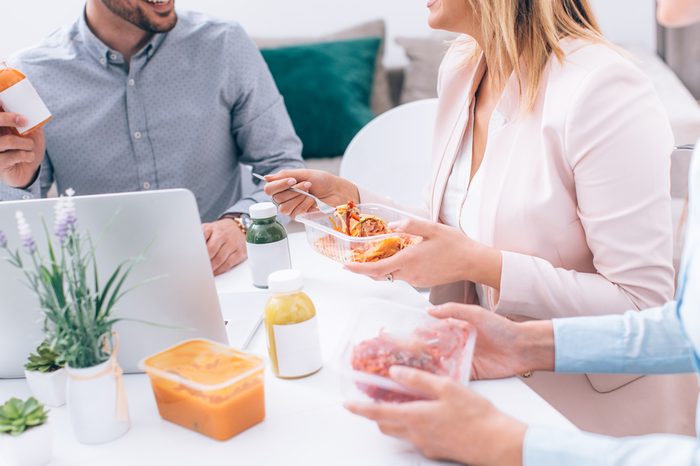
Try taking your lunch break earlier
A study published in the International Journal of Obesity found an association between taking an earlier lunch break and losing more weight. Participants who ate their lunch earlier lost 25 percent more weight than those who dined after 3 p.m. All participants consumed the same amount of calories and the same foods. Researchers speculate that this weight change could be due to lower insulin sensitivity or impacts on the circadian system.
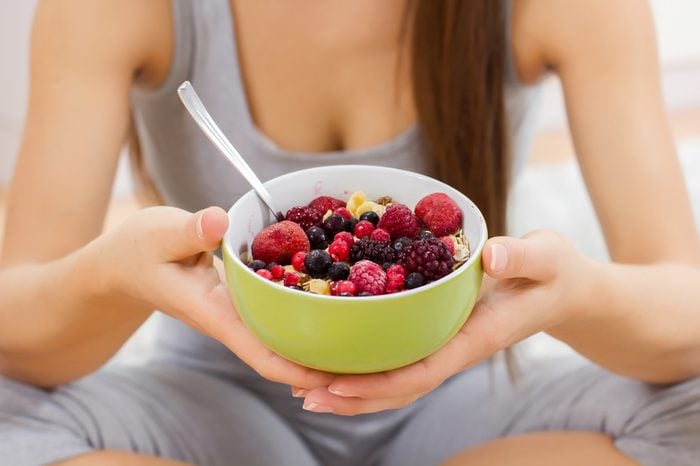
Stick to an eating schedule
Fiola Sowemimo, MD, board-certified in internal and bariatric medicine in Freehold, NJ, says that the quality and quantity of food you eat is only half of the weight loss equation. “Regardless of which diet you choose, when you eat is important too,” Dr. Sowemimo says. Starving during the day and ignoring hunger could lead to bingeing later, she says. Plus, Wendy Bazilian, a doctor of public health and registered dietitian, adds that the peaks and valleys of hunger throughout the day could make it more difficult to manage cravings. Eating regular meals at regular times could actually help normalize your metabolism, according to Bazilian.
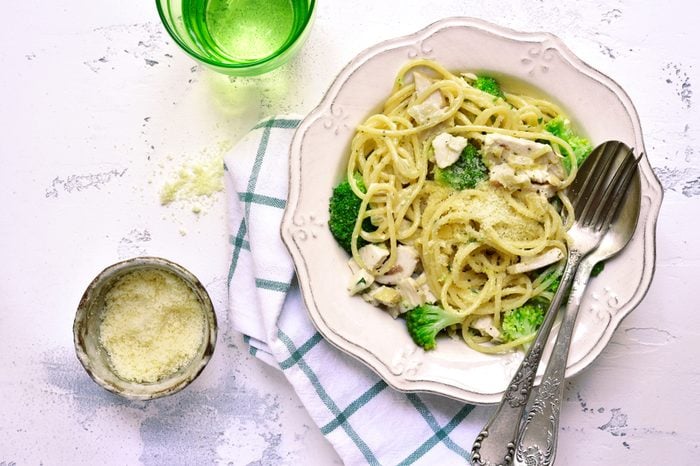
Don’t hoard your calories
Saving your calories for a big meal, later on, is not recommended, says Danielle Pashko, the author of Breaking Your Fat Girl Habits: Weight Loss Mistakes Even Healthy Chicks Make!. This bad habit leads to overeating. Instead, try having a protein-full snack to ward off hunger two hours before your big meal.
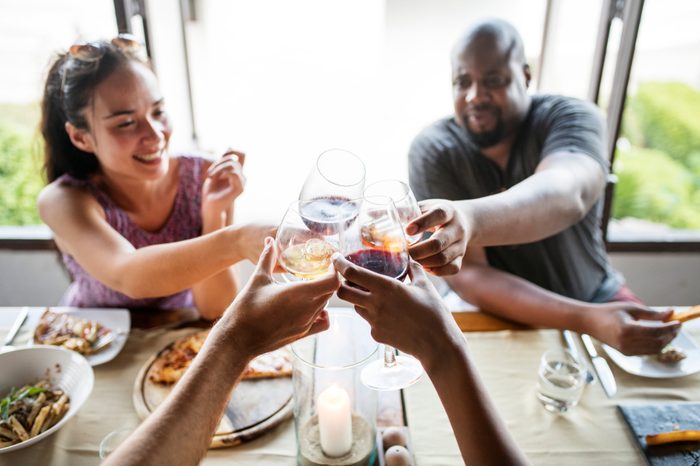
Sit down and eat without distractions
Mindful eating is vital for a healthy diet, according to McKenzie Flinchum, RD, founder of The Flexible Dietitian LLC. “We tend to eat for many other reasons besides hunger, including boredom, celebrations, food cravings, etc.,” Flinchum says. “When a person sits down while eating, he or she is more conscious and is better able to pay attention to the whole process.” That said, eliminating other distractions while eating is beneficial too since a study published in The American Journal of Clinical Nutrition found that distracted eating may add to weight gain.
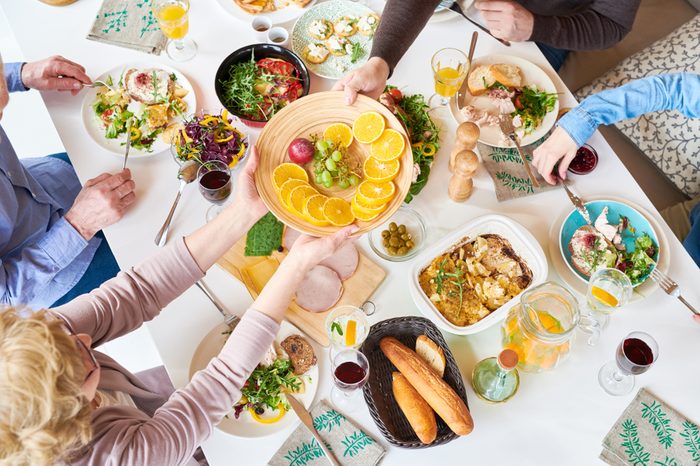
Eat only in designated areas
Another tactic that helps eliminate distractions while eating is eating only in designated areas. One study published in the journal Obesity even found that families who eat dinner at the kitchen table tend to have lower BMI. Sitting down at the table means you are more likely to focus, rather than be distracted and overeat.
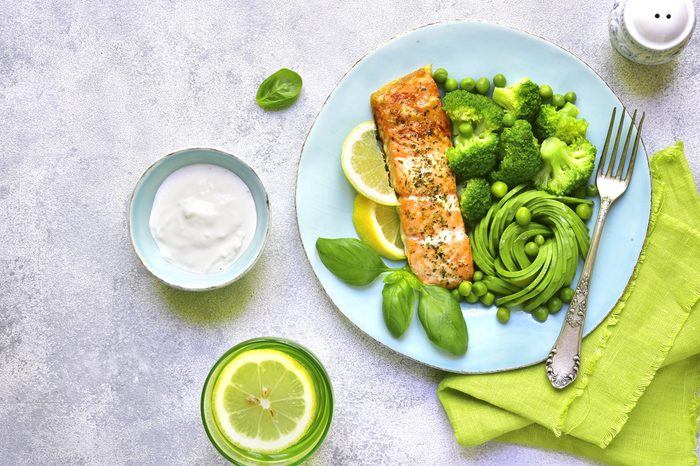
Eat your vegetables at the beginning of the meal
Andrew James Pierce, RD, inventor of the SugarChecked app, suggests prioritizing vegetables and serving them at the beginning of the meal. This ensures that nutrient-dense veggies fill you up first. Eating them could help curb your appetite before moving onto the next portion of the meal. Give these other 11 natural appetite suppressants a try.
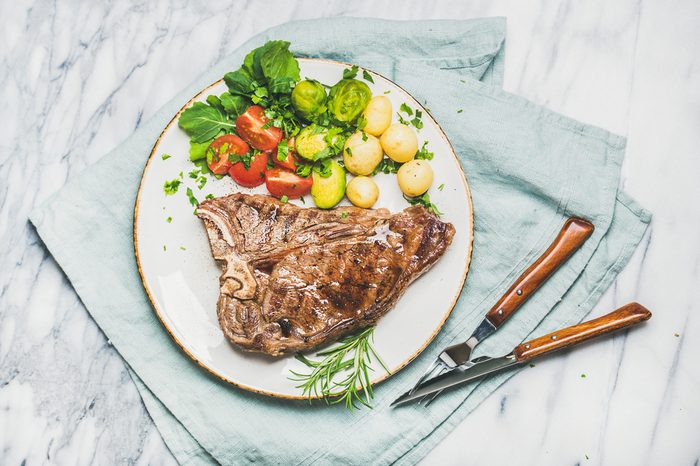
Add a vegetable to every meal
Likewise, try including a vegetable in every meal. The combination of water and fiber will add volume without adding lots of calories. You’ll also be fuller longer making it easier to eat less. Plus, vegetables are natural sources of vital nutrients that your body needs.
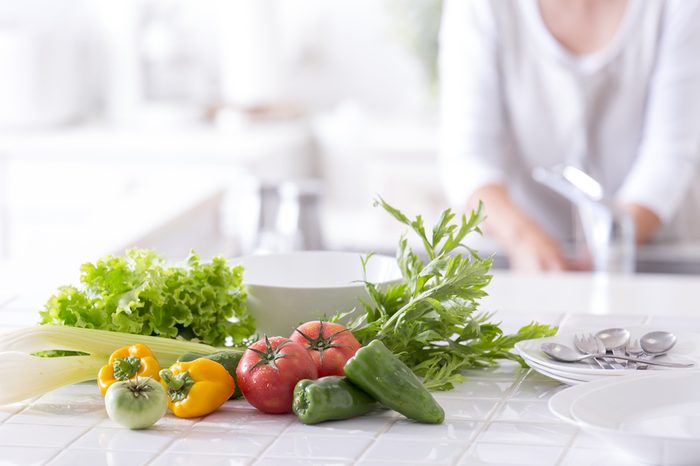
Display healthy foods—and keep tempting options hidden
Keeping fruits and vegetables in your line of sight could encourage you to eat more of them—rather than other high-calorie snack options. On the other hand, research shows that when unhealthy options are in full view, hunger and cravings may increase. One study published in Health Education & Behavior specifically found that when high-calorie foods are more visible at home, the residents are more likely to weight more, compared to people who only keep a bowl of fruit out. These are the superfoods that could help you lose weight.
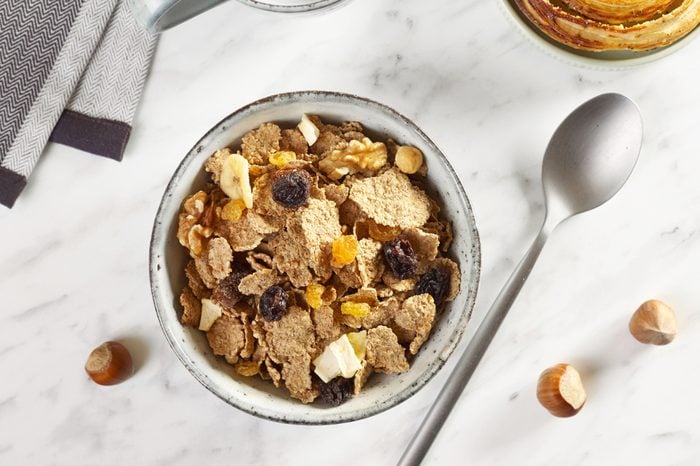
Eat protein in the morning to prevent nighttime sugar cravings
Consuming protein in the morning will stabilize blood sugar, Sharon Collison, RD, sports dietitian and clinical instructor at the University of Delaware, says. “Make sure to have an excellent source of protein with every breakfast such as Greek yogurt, cottage cheese, or two to three eggs,” she says. Eating more protein earlier in the day could also help reduce sugar cravings in the late afternoon, Collison adds.

Use smaller dishes or plates
Opt for smaller bowls instead of large dinner plates, suggests Rachel Goldman, PhD, a senior bariatric psychologist at the Bellevue Center for Obesity & Weight Management. Try plating dinner away from the table instead of serving family-style to combat overeating or mindless grazing. Don’t miss these tips for getting over a weight loss plateau.
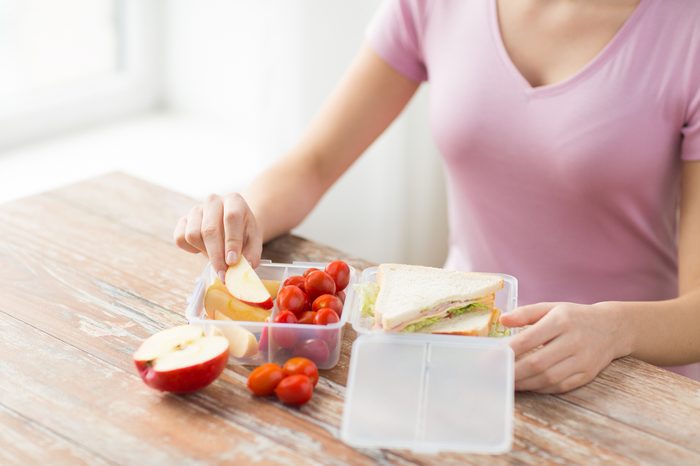
Pack your lunch the night before
Portion control is a big part of losing weight and keeping it off, according to the Mayo Clinic. Pre-packing your lunch could help. “Learn about portions and embrace the idea, not just because they help you lose weight, but because it’s great to know the right size for your own body and activity level,” Bazilian says. Portioning out your lunches also takes the guesswork out of eating out and could help you save money. These are the tips a weight loss coach won’t tell you for free.

Log what you eat
Keeping a food journal could help you reach your weight loss goals. As we go through the motions of our day, it’s easy to grab a snack here or take a bite of a treat there absently without even recognizing these often empty calories. Colleen Cannon, PhD, a clinical psychologist with Craving Change who specializes in helping people deal with the emotional side of eating, says the act of writing down what we eat helps us become more aware.

Or photograph your food
If writing down your meals seems like too big of a task, try snapping pictures instead. Visually seeing your food could highlight bad habits stalling your weight loss. Doing so also helps you pay more attention to future choices. Here are other weight-loss tricks that have nothing to do with diet or exercise.
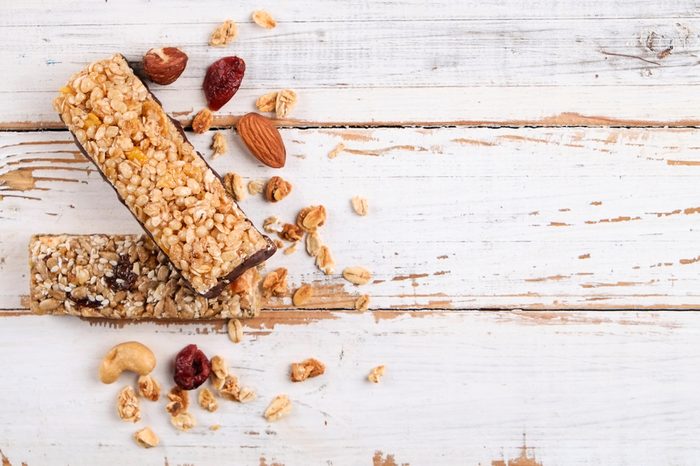
Skip foods marked “fat-free”
It might seem like swapping regular products for “fat-free,” or “diet foods” is an easy fix. But they could do more harm than good. When it comes to fat-free foods, choosing the full-fat option will keep you fuller longer, according to Pashko. Steering clear of ravenous hunger will ensure you don’t overeat later.
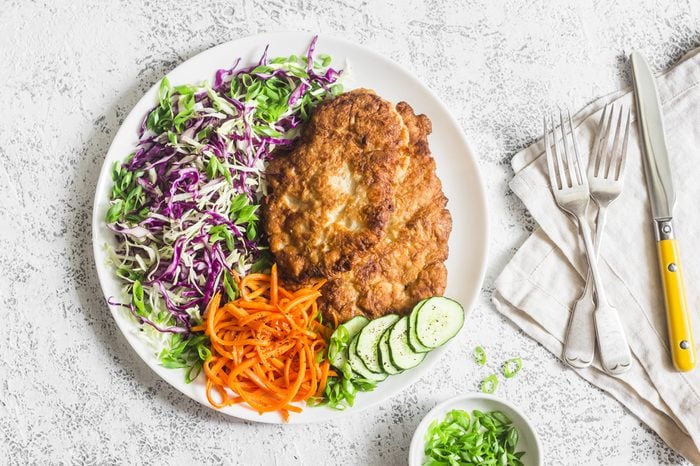
Balance your meals
Cutting out food groups is not the healthiest weight loss solution. “When you eliminate either fats or carbohydrates, you’re probably eating way too much of what’s left over,” says Kristin Kirkpatrick, RD, manager of wellness nutrition services at the Cleveland Clinic Wellness Institute. For example, if you cut out fat, you could overdo it on carbohydrates or vice versa. Instead, Kirkpatrick recommends balancing your meals and having one whole grain carbohydrate at each meal and opting for low-fat dairy products and lean meats. Here is the worst diet advice nutritionists have ever heard.

Use a large fork
It might seem counterintuitive to eat with a large fork, but there appears to be a bit of psychology behind the idea that using one may make you eat less. The idea is that using a big fork gives people the idea that they are filling up since larger forks hold more food. As an aside, a study published in Food Quality and Preference found that fork users consumed their meals more slowly and tended to consume less than diners who chose to use a spoon instead. Something to consider the next time you’re choosing a utensil!
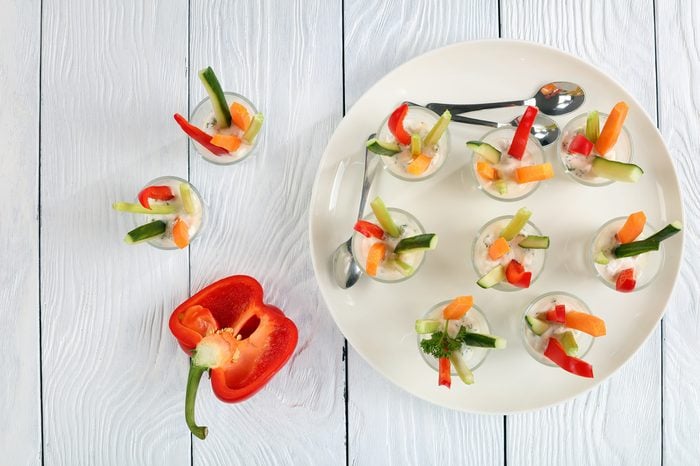
Or eat with your hands
Eating finger foods takes more time leading to a more satisfying experience, Amy Gorin, RDN, owner of Amy Gorin Nutrition in Jersey City, NJ, says. “I’ll often include finger foods in my clients’ meal plans, as it’s not just kids who love to eat with their hands,” she says. Some good options include lightly salted edamame, hummus, whole-grain crackers, sliced mushrooms, and sliced bell peppers. Here are the secrets nutritionists won’t tell you for free.
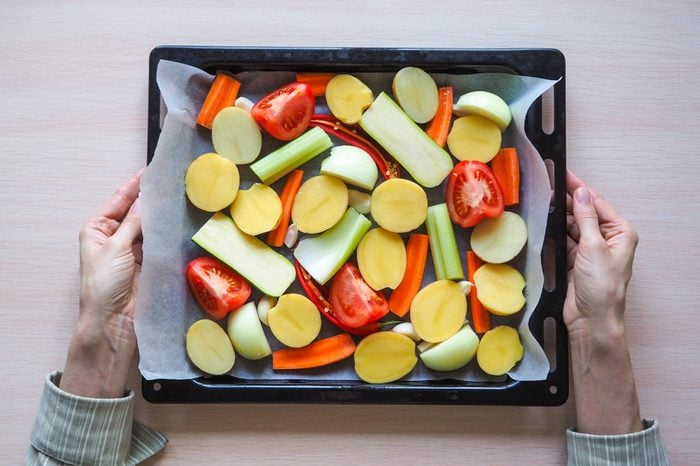
Splurge for the pre-chopped and pre-washed produce
If taking the time to slice and dice vegetables holds you back from eating them, then invest in the pre-chopped or pre-washed vegetables. Rene Ficek, RD, the lead nutrition expert at Seattle Sutton’s Healthy Eating says fresh produce is the cornerstone of healthy nutrition—and using pre-chopped vegetables could cut your cooking time in half. “Plus, keeping sliced veggies and prepared dips like hummus are great to have on hand at all time,” Fieck adds.
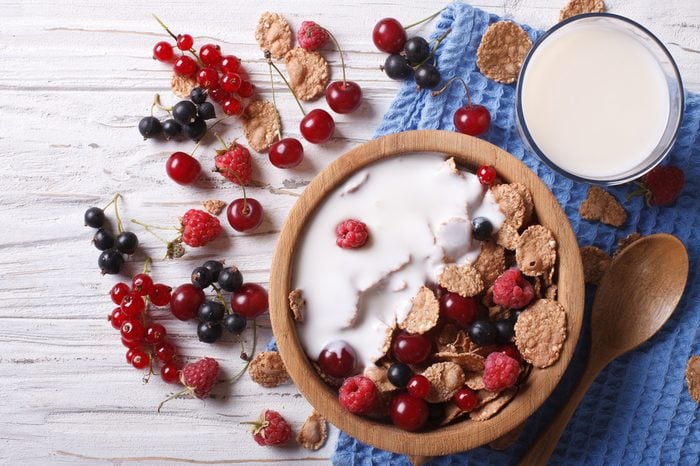
Always keep healthy snacks on hand
Eating healthy is easier if you prepare for the expected and the unexpected. That’s why nutrition consultant Lara Felton, RDN, in Cupertino, CA, recommends preparing filling snacks for work or school. “I find that people often make poor food choices because they get so hungry they just grab whatever is close,” she says.”If you have something healthy already tucked in your bag or briefcase, you’ll save yourself the extra calories and eater’s remorse.” She recommends packing snacks that have a balance of carbs, protein, and healthy fat to keep your energy levels up and hunger at bay, but nothing too perishable or fragile.

Cook most of your meals at home
Eating at home puts you more in control of what you eat and how much you eat. One study published in the International Journal of Behavioral Nutrition and Physical Activity found that people who ate at least five home-cooked meals per week were 28 percent less likely categorized as overweight. And they were 24 percent less likely to have excess body fat than participants who ate less than three home-cooked meals per week. Here are the weight loss rules pros cheat on.

Try measuring high-calorie ingredients
Portion control is another key element of weight loss. Part of the process is understanding an actual serving size. Measuring high-calorie ingredients will help you learn to eyeball portions. Even calories from healthy foods add up. “One of the foods people love are healthy fats, which are great,” Amari Thomsen, RD, founder of Eat Chic Chicago, says. Your definition of a handful of nuts might be four times bigger than an actual serving size, she warns.
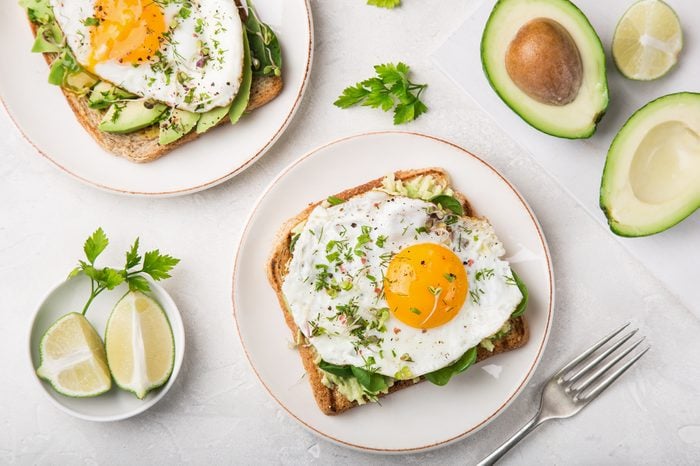
Swap instead of restricting
Different foods have different nutritional values, even if they sometimes have the same number of calories. And making a few simple food swaps could be beneficial for both your health and your waistline. Felicia Stoler, RD, an exercise physiologist, suggests swapping margarine for butter, corn oil for soybean oil, corn-fed proteins for grass-fed proteins, and artificial egg whites for farm fresh eggs. “Smart consumers are choosing grass-fed options because those tend to have more nutrients and fewer added hormones,” Stoler says.
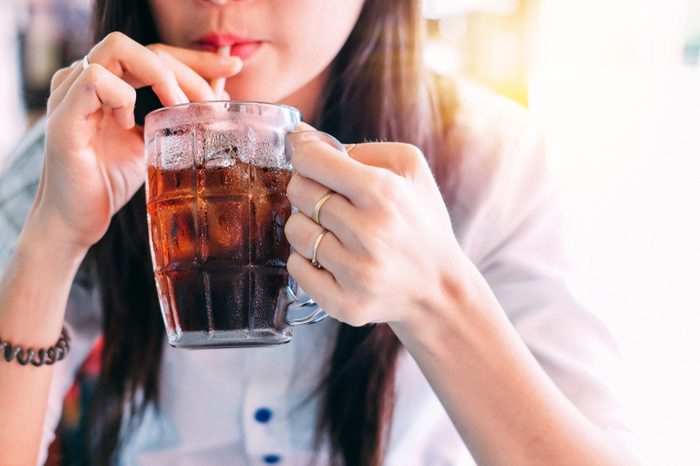
Nix your soda habit
Liquid calories could sabotage weight loss success. Soda is an obvious culprit, but fruit juice, energy drinks, alcohol, and other sugary beverages could all also add to weight gain or obesity, according to Boston Public Health Commission. “Sometimes a bottle of iced tea or juice has 2.5 servings,” says Lisa Lillien, founder of HungryGirl.com and author of the book The Hungry Girl Diet. “Read labels and you’ll see it’s just not worth it.” Bazilian adds that sodas and other fruit “drinks” don’t satisfy hunger—meaning you may eat equal or more in food calories too. These are the quick weight-loss tips nutrition pros swear by.
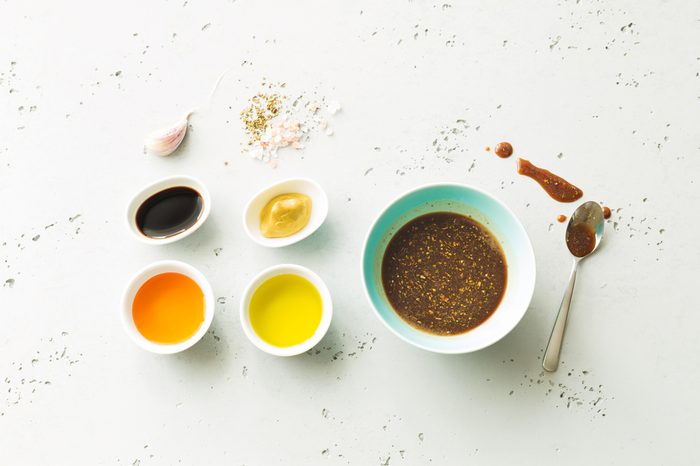
Switch salad dressings
Fresh salads with fruits and vegetables are a great way to pack a nutritious punch. But using a high-calorie dressing with lots of fat, salt, and sugar could be adding unnecessary calories. Libby Mills, RDN, spokesperson for the Academy of Nutrition and Dietetics, says pre-made dressings are one of the worst offenders. Instead, ask for salad dressing on the side when eating out or use fresh lemon juice, vinegar, and olive oil for a lighter option. Here are other salad mistakes that could cause weight gain.

Skip the sugar in your daily coffee or tea
Coffee add-ins could be adding in unnecessary extra calories to your diet. According to the Mayo Clinic, common calorie culprits include sugar, half-and-half, whipping cream, and even fat-free milk. Meanwhile, black coffee has only five calories. Andy Bellatti , RD, a Las Vegas-area nutritionist, adds that another good swap is unsweetened plant milk instead of the sweetened ones for your beverages.
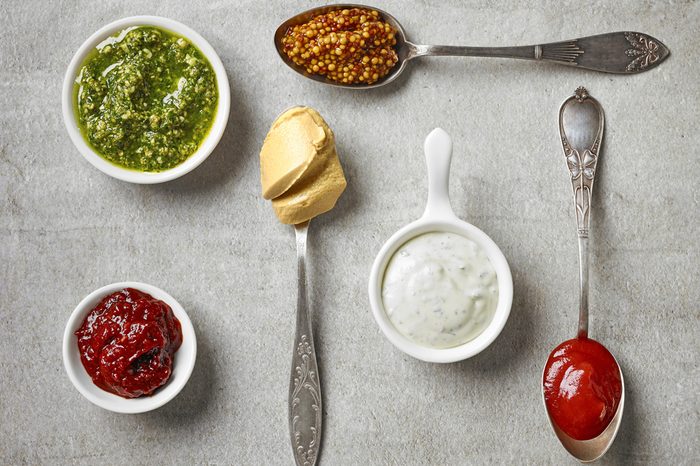
Ditch the condiments
Topping foods with heavy sauces or condiments could add extra calories and often little nutritional value. For example, ketchup often has a high amount of sugar. According to Monica Auslander, RD, founder of Essence Nutrition, one teaspoon of ketchup is equal to eating a sugar packet. “It’s deceiving because it has no fat, so people think they can enjoy freely,” she says. “Unfortunately, we now know that sugar is far more insidious than fat.” Fortunately, there are healthier lower-calorie options such as pesto, hummus, and DIY recipes. These are the condiments that are bad for your health.
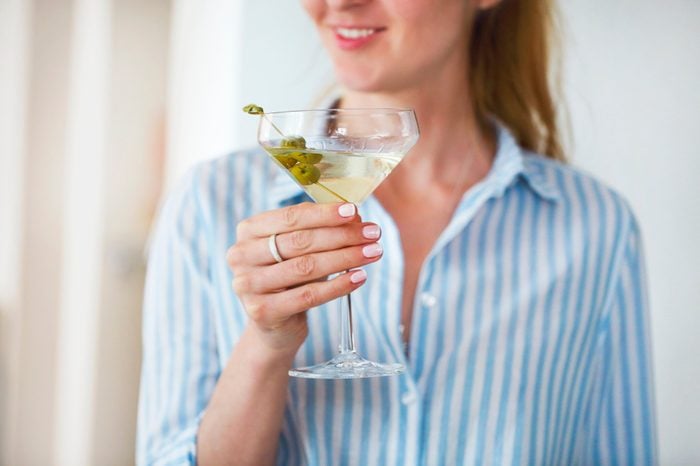
Cut back on alcoholic drinks
It could be beneficial for your health and your weight loss goals to drink more water and less alcohol. Bazilian says that alcohol doesn’t have to necessarily be avoided altogether. but you should think if and where alcohol fits in the context of your overall health goals. “Aside from calories, alcohol doesn’t offer much by way of nutrition, so it’s at minimum an important decision to have going into any weight-loss program for yourself whether, how often, what type and how much may or may not fit in your timeline and goals,” she says. Alcohol also reduces inhibitions sometimes making it more challenging to make healthy eating choices, according to Bazilian. And alcohol may negatively impact sleep which plays a role in healthy metabolism, she adds.
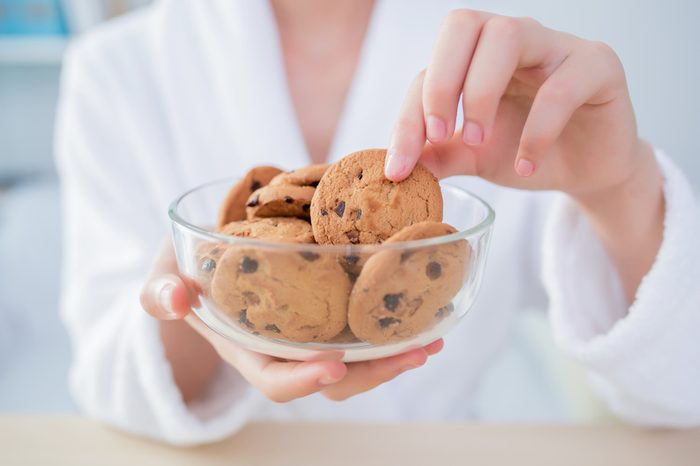
Allow yourself a little wiggle room
Bazilian says one of the worst things she sees as a dietitian are people who have an “all or nothing” approach to nutrition. Instead of setting rigid rules that could discourage you, Bazilian suggests applying gentler guidelines along with positive reinforcement can help. “If you’re trying to shift your habits around an afternoon snack that consists of sugary baked good or cookie or candy and a coffee, perhaps build in room for a day (one!) where this may happen either spontaneously or during a planned instance,” she says. “Then navigate the rest of the week keeping in mind that you’ve built in some flexibility and you’re not depriving yourself.” Next, check out these ways to lose weight without a lick of exercise.

